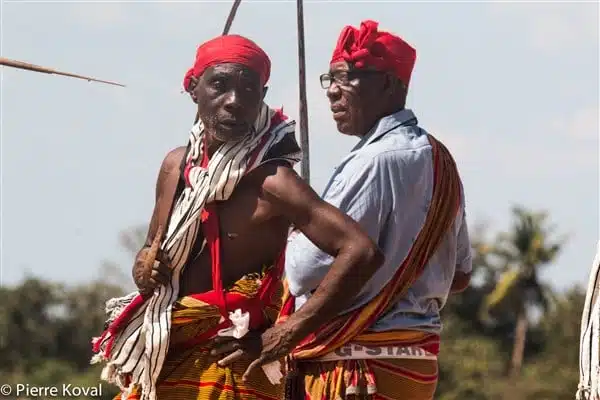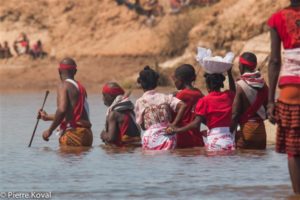Fitampoha – Honoring King Toera’s Dynastic Relics
Does the Natural History Museum in Paris preserve the skull of a Malagasy king who was killed by France in the 19th century?
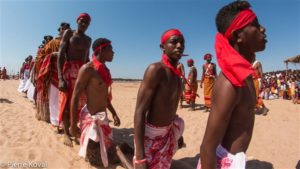
Fitampoha – the Bathing Ceremony of the Royal Relics in the Tsiribihina River
It is a very special ceremony that takes place from August 12 to 19 near Belo-sur-Tsiribihina. Fitampoha ceremony in the west of Madagascar will take place.
The Fitampoha, an ancient dynastic ceremony, brings together thousands of people every five years.
On the eighth and final day of the celebrations, royal Sakalava relics are taken out and immersed in the Tsiribihina River.
However, the absence of one of the relics clouded the event and revived a wound: the tragedy of Ambiky.
During the attack by French colonial troops on the night of August 29-30, 1897, on the former royal capital of Menabe, King Toera (ca. 1853-1897), who was posthumously nicknamed Andriamilafikarivo, was beheaded.

Some have concluded that he was lost forever, the descendants of King Toera are represented by the Kamamy family, the main organizers of Fitampoha.
They are still denied the skull of their ancestor and the freedom to worship it, as this part of the skeleton is necessary for his relic.
Several years of research have opened up new avenues that could lead to the authentication of the skull of the last independent king of Menabe.
Im In the summer of 1897, a year after Madagascar was declared a French colony, a military campaign was launched to “pacify” the west of the island.
General Gallieni prioritized the occupation of Menabe. In the night of August 29th to 30th, Commander Gerard carried out a surprise attack on the royal village of Ambiky, which had laid down its weapons.
It was a real massacre.
Among the killed, whose number is still undetermined (97 according to official reports, 5,000 according to informants of colonial crimes), were King Toera and his.
Right hand, Vongovongo.
Ambiky has long been associated with the decapitation of the Menabe kingdom, deeply traumatizing the Sakalava people.
A general uprising then ignited the Menabe. During the five-year “rebellion” of Sakalava (1897-1902), the western region was particularly restless.
Human skulls as a priority
In this context of crisis, Guillaume Grandidier, son of the famous explorer Alfred Grandidier, conducted expeditions through the land of the Sakalava in the years 1898-1899.
The naturalist was allowed to follow the pillars on their way through the west and southwest of the island.
I went to the commander to speak with him, who allowed me to take them, but when I unearthed them, the infection was so great that I was forced to bury them hastily elsewhere, from where they are to be exhumed next month to send me the skulls to Tulear.”
The mention of “illustrious Sakalava of the Tsiribihina” and the fact that these heads were under the supervision French military chiefs held in Morondava suggest that these two individuals were prominent political figures.
However, at that time, the main Sakalava chiefs of Tsiribihina were killed by the French during the attack of Ambiky.
Among them, the most respected figures were undoubtedly King Toera and Vongovongo. Eight months had passed between their execution and the writing of Grandidier’s letter.
The two skulls of “Sakalava of Tsiribihina” were labeled with the words “April 1898”. This would be the date of their takeover by the French military authorities in Morondava.
The transportation of these skulls from Tsiribihina to Morondava was of strategic importance, as in the. During the late rainy season from March to April 1898, a large-scale operation was prepared to crush the “rebels” in the river region.
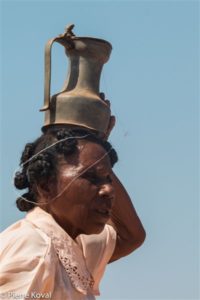
From Morondava, the two skulls of the Sakalava were sent from the Tsiribihina to Tulear, on the southwest coast of the island, and then, perhaps via the island of Reunion, to Marseille and.
These skulls were inventoried among the objects that were taken into the Department of Anthropological Collections of the Paris Museum of Natural History in 1899, where they are kept out of public view and are still in good condition.
In order to determine if one of these two Sakalava skulls from the Tsiribihina could be the skull of King Toera, a request for a DNA sample was sent to the museum in June 2014 with the approval of the Kamamy family.
The museum’s response is still pending.
The “Fitampoha” or Bath of the Royal Relics Today
In every region of Madagascar, there is a. A ritual of ancestor worship, consisting of honoring the ancestors. For the majority of Malagasy people, the ancestors residing in the afterlife are the intermediaries between the “Zanahary” deity and the living, so the natives give them a special place.
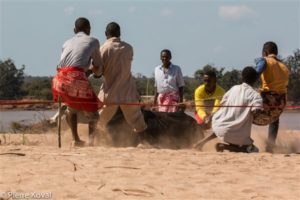
The last ritual took place in 2016, the next one will be held in 2021. This means, in the western part of the island. located in the northwest. This practice involves cleaning the bones of the deceased kings who once ruled the kingdom of “Sakalava” and soaking them in flavored oil and honey, with the aim of pampering the royal ancestors, showing them respect, and seeking their blessings. In the past, this ritual of ancestor worship has been practiced annually since the 17th century and was initiated by King Andriandahifotsy.
However, during colonial times, this ritual was almost banned and only became feasible after about ten years. This rite is naturally accompanied by traditional attire.
Key institution of the “Sakalava” kingdom.
The relic bath is. Truly the key institution of the “Sakalava” kingdom.
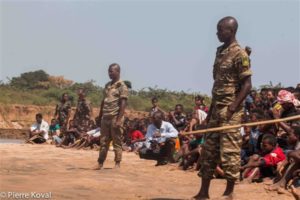
Over time, the “Fitampoha” became the framework for stabilizing the lineage during each royal succession.
Despite the struggles for dynastic legitimacy, the Genealogy of the “Sakalava” kings reconstructed by historians based on oral traditions reveals that the dynastic succession of Menabe followed the rules of patrilineal preference and primogeniture.
In any case, the “Fitampoha” of the third millennium is now only the place where external relations regarding regional autonomy are recorded.
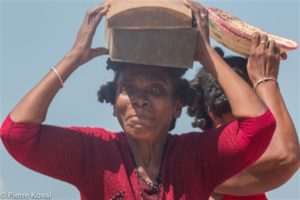
It is as if administrative procedures could directly address the issue of horizontal. Solidarities serve to replace the legitimacies of ancestors introduced in the “sakalava”, the “restored families”.
The “Fitampoha” of the Menabe region today.
Currently, the Menabe tribe organizes this ritual every five years, and in addition to the cult of the dead, the “Fitampoha” is also a major celebration.
Since its inception, this tradition has always spanned seven days.
As for the days before the first week, this means the gathering of guests from all over the Menabe region as well as the residents of Belo-sur-Tsiribihina.
The beginning of the ceremony is marked by a grand celebration in honor of the tribe and the ceremony itself. Certainly, therefore 
Then, on the 5th day, at this moment, the royal relics or the well-preserved “Papa” in the “Zomba” or royal hut are brought to the island of Ampasy to be washed on the beach of Belo-sur-Tsiribihina.
The 7th day, the end, involves drying, the freshly washed bones are coated with “Zebu” oil. During the removal of the relics, the tribe is allowed to. The king’s sons-in-law and the woman inhabited by the spirit, the ones responsible for carrying the relics and those chosen for the bath, approach.
Long after drying, the bones are soaked in flavored zebu oil and brought back to the royal hut, the “Zomba”, where they are stored.

